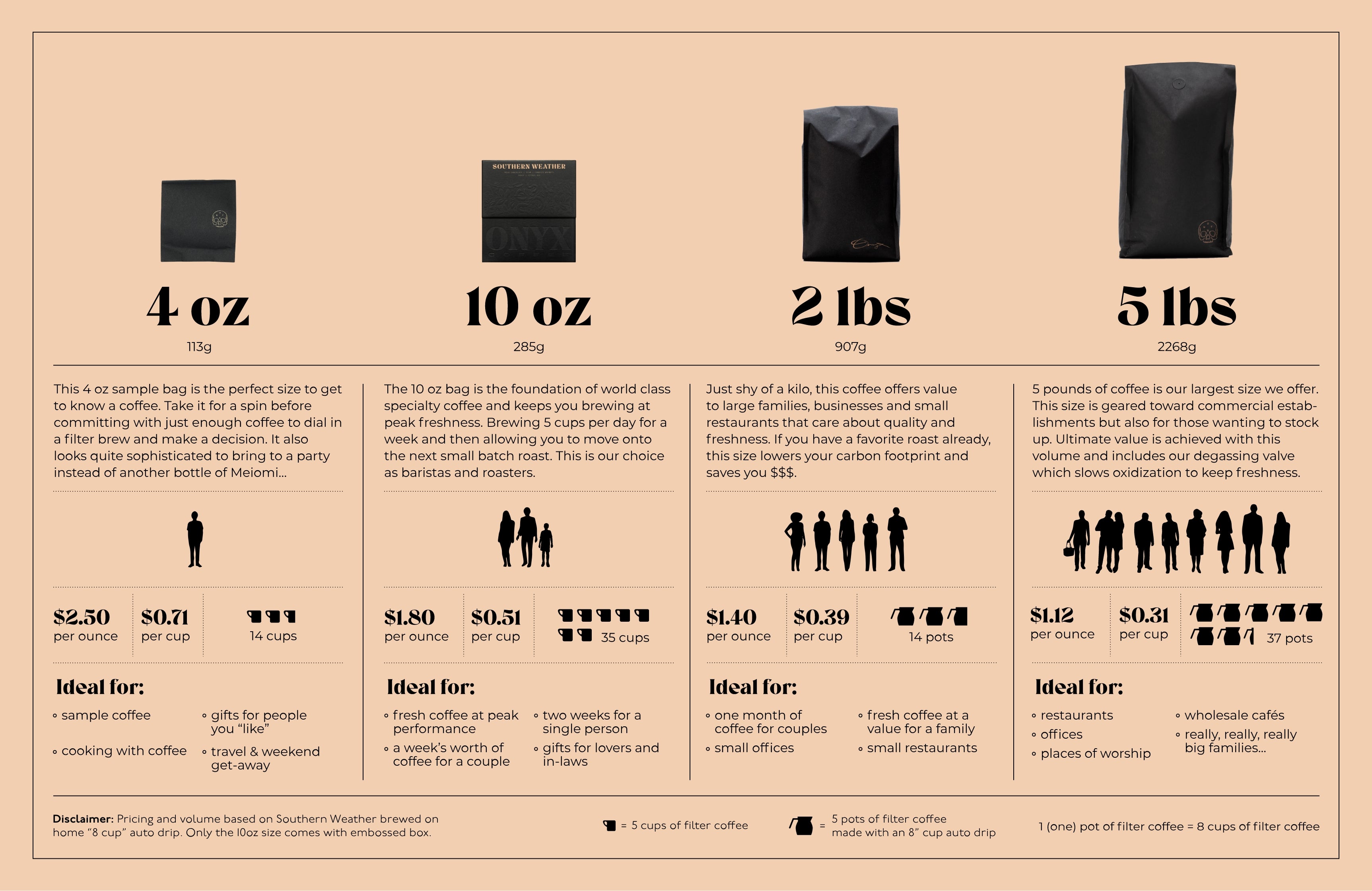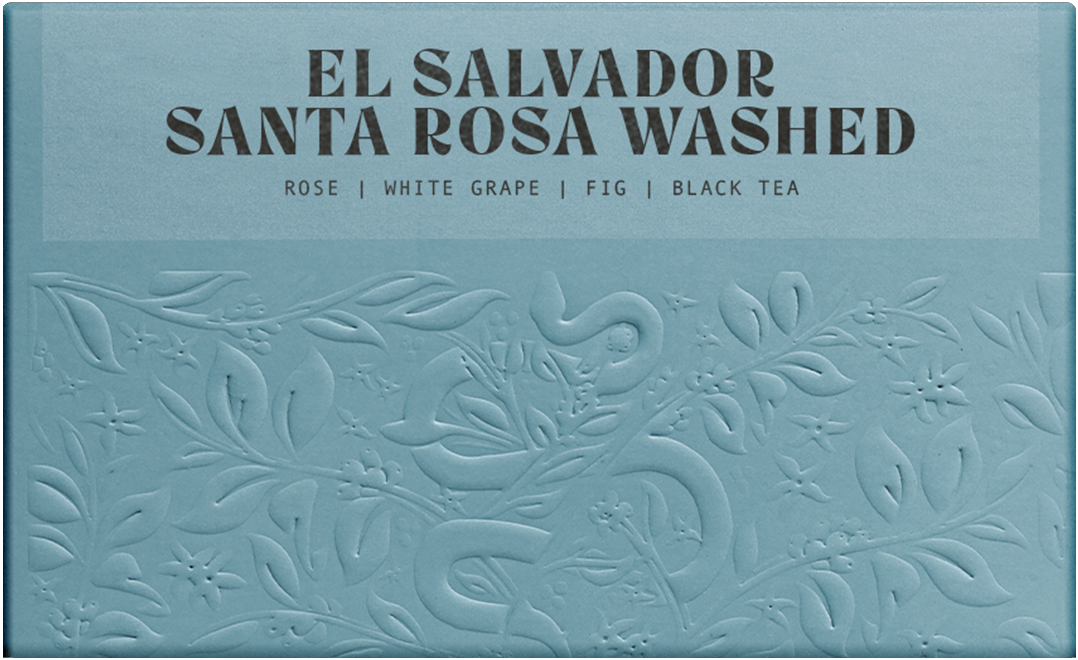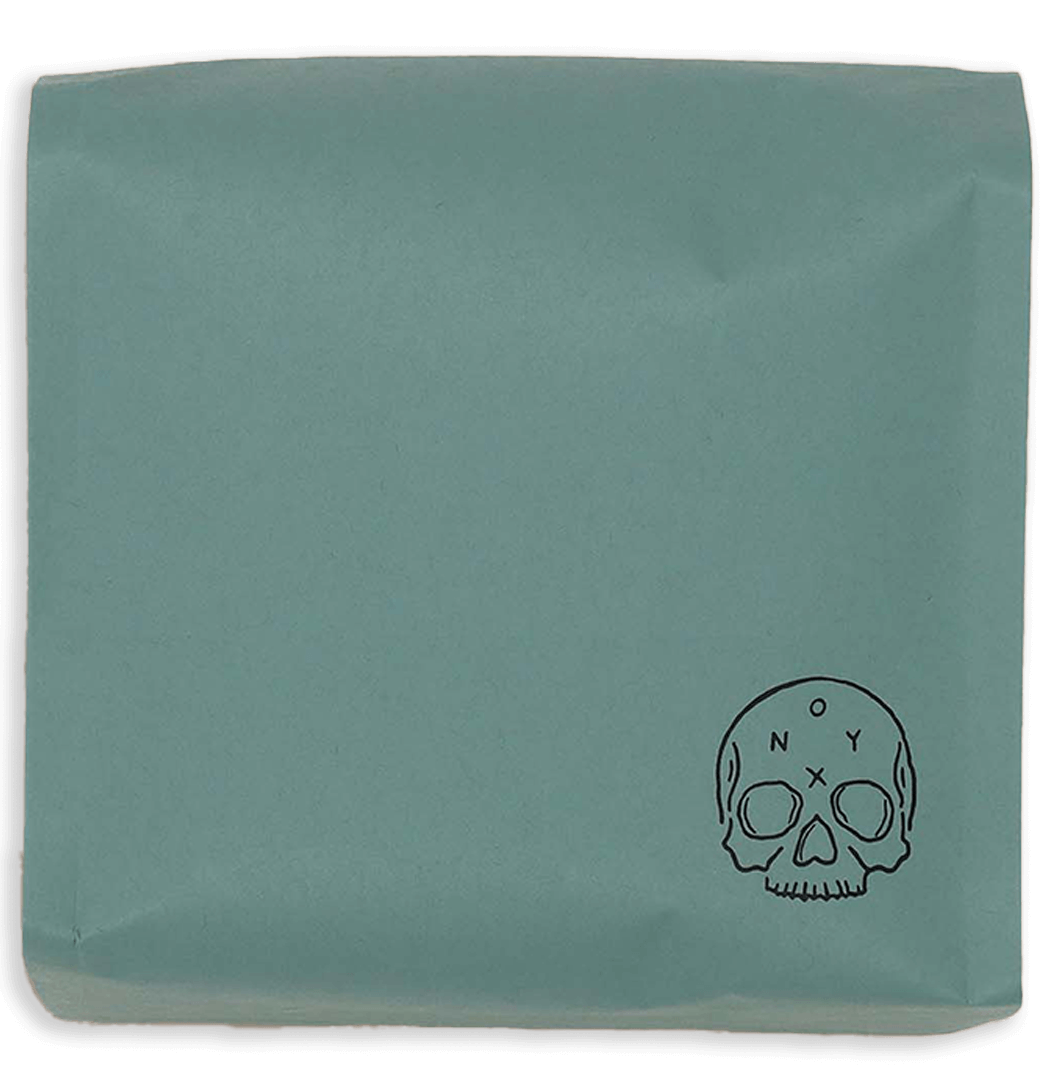Story
Season after season, the coffees we purchase from Jorge Raul Rivera tend to be some of our top lots of the year. Raul has a razor-sharp attention to detail, which is what it takes to produce award-winning coffees so consistently. That focus extends far beyond just processing and drying. Each season, we cup offerings from Santa Rosa that are separated down ‘day lots.’ We cup through these individual pickings to build a profile that we believe best reflects the terroir and processing of Santa Rosa. This season we cupped these selections at Raul’s lab in San Salvador, with stunning views of the city. Shortly after we made our selections, Raul went on to take second place in the Cup of Excellence. Each season has its unique challenges, and it has been this way since we began to work with Jorge Raul Rivera. The one thing that has been consistent since we first met him at a Roasters Guild retreat nearly six years ago is Jorge’s willingness to work extremely hard with the highest level of hospitality, which is evident in the quality of his coffee and his relationships. Since our first visit to Santa Rosa where he showed us around his favorite spots in El Salvador, to the season when we could only communicate via WhatsApp, his attention to detail and penchant for quality is what shines the brightest.
HISTORY OF SANTA ROSA & EL SALVADOR CIVIL WAR
Finca Santa Rosa was purchased in 1979 by Jorge Rivera’s father. Initially, he invested in the land for forestry by planting walnut, white oak, and other hardwood trees. The following year a coordinated guerrilla based revolutionary war started, and El Salvador experienced a 12-year civil war. The Chalatenago area was largely affected, and neither Jorge or his father were able to visit the farm then. Fast forward to the late 90’s and Jorge’s father, now back at Santa Rosa, saw an opportunity to plant coffee amongst the trees. At the time, intercropping and shade growing were unheard of as it slowed coffee growth and affected the yield. The benefits, though, can add to the cup profile and are very sustainable.
Jorge went to agriculture school in Honduras and then to LSU here in the states. He went back to El Salvador and took over the coffee farm refining the fermentation techniques, fertilizers, and varieties. His Pacamaras took 5th place in the 2011 Cup of Excellence. Seeing the progress created, they became even more scientific and in 2014 won 1st place in the Cup of Excellence (COE). What’s even more impressive is that although he won, Jorge did not rest on his laurels, he doubled down on investing in the farm and again won 1st place this year at El Salvador's COE. We happily bought a majority of his crop this year, and we are incredibly excited to share these beautiful coffees with you.
WASHED PROCESSED COFFEES
The washed process begins with coffee cherries delivered to the washing station, both from the primary market or from farmers bringing their coffee directly to the mill. The cherries are inspected, and an initial quick round of hand-sorting separates the defective coffees before placing them into the hopper. They are then funneled to the depulper, which removes the fruit from the seeds (beans). After that phase is done, the coffee is fermented underwater for approximately 12-36 hours. During this fermentation, a microbial de-mucilagation takes place, which allows the outer fruit and pectin layer to break down, making the coffee easier to dry. This phase also crucially alters the organic acids within the coffee, as sugars and organic acids are transformed, with the best washed coffees maintaining their complex fruit esters. Once the fermentation is complete, the parchment is emptied into the washing channels, where it is agitated with rakes to remove the last of the fruit layer. During this step, the water is refreshed to ensure it’s capability of separating the fruit layer from the seed. Once the washing is complete, the coffee is taken to the raised drying tables for sun drying.



